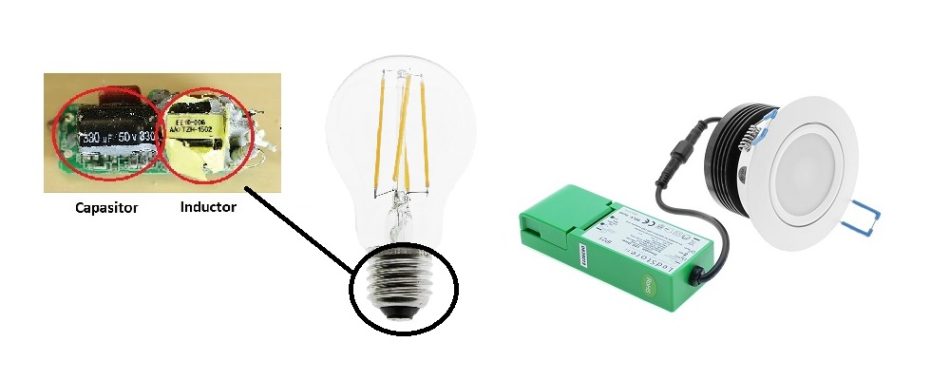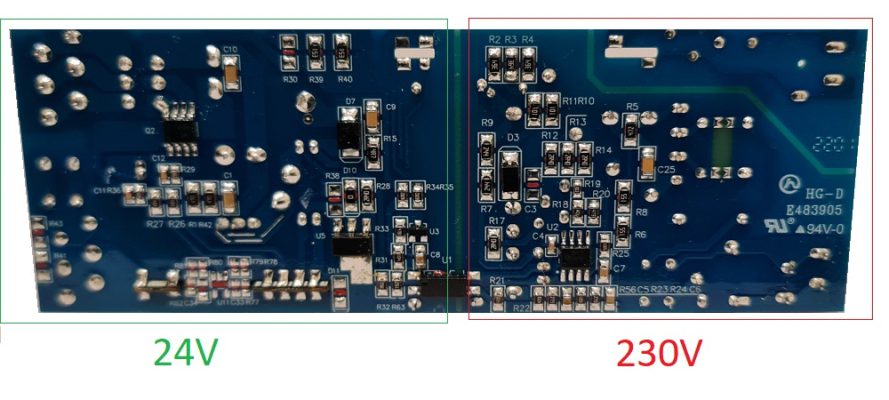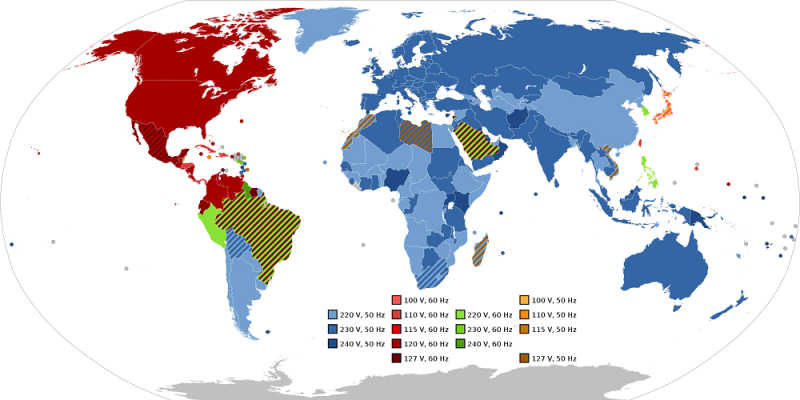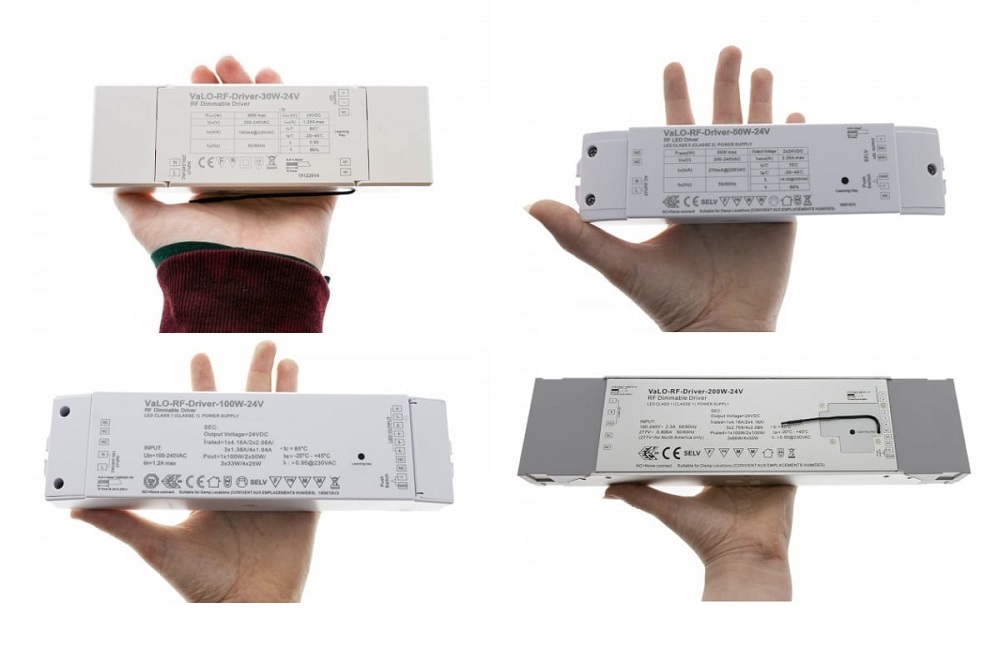[vc_row][vc_column][vc_column_text]The led transformer controls how much power an individual led or group of leds receives. LEDs, or light-emitting diodes, are low-energy light sources with a long lifetime and low energy consumption. This is why they need specialised power supplies.
How do LED driver work?
As the temperature of the LED changes, its forward voltage also changes. The hotter the LED gets, the less voltage is needed to pass current through the LED, so the LED uses more current. An uncontrolled rise in temperature will burn out the LED. The power levels of the DC (VDC) led transformer are designed to meet the needs of the LEDs in use. The constant current of the driver keeps the temperature of the LED circuit constant by responding to changes in forward voltage.
Purpose of led driver
The main functions of a Led driver are to provide low voltage and to protect the LEDs. Each LED can draw up to 30 mA of current and operate at voltages of approximately 1.5 V to 3.5 V. Multiple LEDs can be used in series and in parallel to create lighting that may require a total voltage of 12-24 V DC. In the case of a standard current-controlled (A) transformer, large luminaires with many LEDs can draw up to 80 volts. The Led driver converts the AC current to meet the needs of the LEDs and lowers the voltage. This means that the high alternating current (AC) main voltage of 230V must be converted to the required, often how low direct current (DC).
Led driver also protect the LEDs from voltage and current fluctuations. Even if the power supply changes, the Led driver’s circuits ensure that the current and voltage of the LEDs remain within the appropriate operating range. The protection prevents the LEDs from receiving too much voltage or current, which would damage them, or too little current, which would cause them to burn dimmer.
Various Led drivers
External vs. internal led transformer
Most low-power indoor lights, especially bulbs, have built-in LED transformers. This makes the lights cheaper, but also shorter-lived due to the higher internal temperature of the LED.
Led downlights and led panel lights usually use external led driver, i.e. the driver is not built into the luminaire. When using high-power LED luminaires such as street lights, stadium lights and plant lights, external LED drivers are always used without exception.
This is because the internal temperature of the lights increases as the power used increases and if the driver were inside the luminaire, we would have two heat sources, which would make both worse and the life of both the LED circuit and the tdriver would be shortened.
External Led transformers are also a better option from a maintenance point of view, as they can be easily replaced in case of failure.

AC power supply vs. linear
A linear led driver(Linear regular) is a type of led control circuit that controls the current supplied to the led using a linear regulator.
A linear regulator is a voltage regulator that uses a transistor to continuously vary the resistance to stabilize the output voltage. In the case of a linear LED driver, the output voltage is typically set to the forward voltage of the LED, and the linear regulator adjusts the resistance to keep the current through the LED constant. Often how these are the standard power supplies that come with a single LED luminaire.
Linear LED drivers are simple and cost-effective, but they are less efficient than other types of LED drivers. This is because the linear regulator dissipates excess voltage as heat, leading to lower efficiency and higher power dissipation. Linear LED drivers are generally not suitable for high power luminaires or where energy efficiency is a critical requirement.
A switchingpower supply is a type of transformer in which power is switched on and off at a rapid rate.
The AC to LED driver uses a high frequency switching circuit to convert the input voltage into a regulated output voltage. The switching circuit is typically implemented using a MOSFET or transistor, and an inductor. The input voltage is switched on and off at a high frequency (Hz), and the inductor stores and releases energy to stabilise the output voltage. The most common example is PWM dimmable power supplies.
Inverters are generally more expensive than linear regulators because they are more complex and have more components.
Insulated or non-insulated led transformer
When comparing these two things, both are called AC power sources. According to UL and CE regulations, the input and output voltages of an isolated led transformer are well separated. To ensure safety, most of the high quality transformers are high insulation drivers. However, it increases the manufacturing cost of the driver. The insulation prevents high voltage from being transferred from the input to the output. In Finland, all drivers sold with LED luminaires should be insulated and are regularly tested by Tukes. The tests will cover issues such as:
- Dielectric strength test: this test checks that the driver can withstand high voltage without breaking. The controller is subjected to a high voltage test to ensure that it provides adequate electrical isolation.
- Insulation resistance test: this test checks the insulation resistance of the controller between the input and output sides of the circuit.
- Overload and overvoltage protection test: this test checks the driver’s ability to protect the LED in overload and overvoltage situations.
- Leakage current test: this test checks the amount of current flowing from the input side of the controller to the output side.
- Continuity test of earthing (if the driver has earthing, Class I)): This test checks the continuity of the ground connection of the controller to ensure that it is properly grounded.
In practice, non-insulated LED transformers can be used, but they must always be installed in a protected enclosure and clearly marked as such.

Constant voltage (V) or constant current (mA) led transformer?
As each LED lamp is different and contains a different LED circuit with different power and characteristics, the current and voltage will also be different.
Standard current transformers are found with individual luminaires because they are easier to dimmer and more cost-effective for a single luminaire. That is, as the name implies, the current is constant for a given voltage range and load.
Constant voltage transformers, on the other hand, are always used in applications where the amount of current is not predetermined, such as LED strip lighting. The selling point of the Led strip is its adaptability, i.e. the transformer may be followed by a power requirement of 40 W or 100 W, for example. When using a constant current, there should always be a fixed number of metres of led tape. Nothing more, nothing less.
In constant voltage solutions, as long as the total watts do not exceed the power supply’s power limit, it works fine. That is, even a 10 W 24V led strip can be connected to a 100 W 24V transformer.
Class I vs. Class II led driver
In this case, I and II are written in Roman numerals. IEC (International Electrotechnical Commission) regulations use the terms Class I and Class II to describe how a power supply is constructed internally and how it is electrically isolated to prevent users from being electrocuted.
According to the IEC
Class I LED controllers must have a protected earth connection and substantial insulation to prevent electric shock. Class I LED controllers usually have a ground connection on the supply side.
Class II LED controllers have additional safety features such as double or reinforced insulation and higher insulation levels between the input and the housing or output, so they do not have a separate earthing.

Class 1 vs. Class 2 led driver
Western numbers 1 and 2 represent the NEC (National Electric Code) standards.
Class 1: Class 1 circuits are high-power circuits that can carry up to 600 volts of electrical power. Class 1 circuits shall be installed in earthed conduits or wiring ducts. Class 1 circuits must be earthed, which means that they are connected to earth to prevent the risk of electric shock and fire. Class 1 circuits require overcurrent protection devices, such as circuit breakers or fuses, to protect against electrical overloads and short circuits.
Class 2: Class 2 circuits are low-voltage circuits limited to 60 volts or less. Class 2 circuits can be installed using less demanding wiring methods, such as basic cables or wire harnesses. Class 2 circuits do not require earthing, making them easier and cheaper to install. Class 2 circuits have less stringent overcurrent protection requirements and may only require a simple current limiting device.
That is, Class 1 and Class 2 circuits have different safety requirements according to NEC standards. Class 1 circuits are designed for high power applications requiring a high level of safety, while Class 2 circuits are designed for low power, low voltage applications where safety requirements are less stringent. Virtually all LED luminaires sold to consumers are in category 2.

Dimmable or non-dimmable led driver
Nowadays, all lights are made to be dimmable, and this is a broad topic, as there are many ways to dim lights, such as :
- 0-10V/1-10V dimmable led driver
- PWM dimmable led driver
- Triac dimmable led driver
- DALI dimmable led driver
For each point, you can access a dedicated blog article where we have discussed that particular dimming method.
Waterproof and non-waterproof led driver
The IP(Ingress Protection) rating is used to classify the water resistance of the led driver The IP code consists of two numbers. The first number rates protection against solid objects on a scale of 0 (no protection) to 6 (no dust ingress), and the second number rates protection against liquids on a scale of 0 (no protection) to 8 (waterproof under pressure). Led transformers with an IP20 rating or lower are intended for indoor use, while waterproof drivers are used outdoors. Some indoor luminaires use waterproof LED drivers because they can produce much more power than low IP rated transformers without the need for an active cooling system, as their housing is metal.

What type of Led driver do I need?
If you want to install LED lights, it is important to choose the right LED driver to ensure that they work safely and correctly. Led transformers are an essential “””‘part of a led lighting system. Choosing the right led transformer can seem like an overwhelming task, but don’t worry, we can help.
I will guide you through the process of choosing the right LED driver, including the mains voltage, the total power used by the LED system and the voltage or constant current required by the LEDs.
Voltage of the electricity network
The first step in choosing the right LED driver is to determine the voltage of the network you are using. The voltage of the grid can vary depending on your location, so it’s important to check what voltage is used in your country. In Europe, for example, the mains voltage is 230 V, while in the United States it is usually 110 V.
It is important to note that some LED drivers are designed to work with a specific voltage range, so be sure to check the specifications of your LED transformer. So if you are buying a transformer on your own initiative, check the voltage carefully. Of course, many drivers operate directly in the 100-240V range.

Photo: Wikipedia
Total power
The second step in choosing the right LED transformer is to determine the total power used by the desired LED group. This depends on the number of LEDs in the system and the efficiency of the individual LED.
To calculate the total power, you need to multiply the number of LED lights in the system by the power of each LED light. For example, if you have 10 LED lights on the ceiling with a power of 9 W, the total power is 90 W.
Once you know the total power, you need to choose an LED transformer that can provide enough power to run LED lights. The output power of the Led driver should be higher than the total power of the LED lights. For example, for 90W power you need a led driver with an output power of at least 90W, preferably a little more.
It should be noted that some LED transformers are designed to work only with a certain power (constant current), so the power of the transformer must be exactly the same.
Constant voltage or constant current
The third step in choosing the right LED driver is to determine what type of voltage or constant current your LED lights need. Led transformers can provide either constant current or constant voltage for led lights according to their requirements.
For example, if your led lights have a fixed voltage of 24V DC, you will need a led transformer that provides a constant voltage of 24V DC. The voltage provided by the Led driver must match the voltage required by the LED lights.
For example, if your led lights have a fixed current of 700 mA, you need a led transformer that provides the same 700 mA constant current. The current supplied by the Led transformer must match the current required by the LED lights.
It is important to note that some led transformers can offer both constant voltage and constant current, so check the specifications of the led transformer before purchasing. We are here to help. If your luminaire has a faulty transformer, you can send us a picture of its nameplate and we can offer you a replacement. We have written about this topic before.
Lastly
In summary, a LED driver is a power supply that controls the amount of current required by an individual LED or group of LEDs. LEDs are low-energy light sources with a long lifetime and low energy consumption, and require specialised power supplies to work properly. Led drivers are designed to match the power level required by the LEDs used. They protect the LEDs from voltage and current fluctuations and provide low-voltage power while ensuring that the temperature of the LEDs remains constant. Led drivers also protect against overvoltage and overcurrent, which can damage the LEDs. It is essential to choose the right type of LED driver for the LED lights you are using to ensure safety and optimum performance.
[/vc_column_text][/vc_column][/vc_row][vc_row][vc_column][vc_toggle title=”What voltage Led driver do I need?”]This depends on the voltage of the LED lights and the number you intend to use. In general, the voltage of the Led driver must be the same as the voltage of the Led lights.
[/vc_toggle][vc_toggle title=”Can I use a 24V driver for a 12V led light?”]No, a 24V driver cannot be used for a 12V led light because the voltage is too high. It can burn an LED light.
[/vc_toggle][vc_toggle title=”How do I check the voltage of a Led driver?”]You can use a voltmeter to check the voltage of the Led transformer. Connect a voltmeter to the output of the Led transformer and read the voltage on the display.
[/vc_toggle][vc_toggle title=”What is the best voltage for LED lights?”]In general, the appropriate voltage for LED lights is specified in the manufacturer’s specifications and varies according to the type and characteristics of the LED lights.
[/vc_toggle][vc_toggle title=”How do I choose a Led driver for my LED light?”]You need to choose an LED driver with the right voltage and wattage for your LED lights. You should also make sure that the LED driver has the correct connections and features.
[/vc_toggle][vc_toggle title=”Does voltage matter for LED lights?”]Yes, voltage does matter for LED lights. Too high a voltage may damage the LED, while too low a voltage may not be enough to turn on the LED.
[/vc_toggle][vc_toggle title=”Can I use a lower wattage led driver?”]Depends on the efficiency of the LED lights and the amount you use. If the LED driver is too small, it may not be able to use all the LED lights at full power or the LEDs may not turn on.
[/vc_toggle][vc_toggle title=”Is 12V or 24V better for LED lights?”]This depends on the characteristics of the LED lights and your needs. In some cases 12V is more suitable, while in others 24V is better. 24V LEDs have the advantage of better current transfer, i.e. the voltage does not drop over a longer distance.
[/vc_toggle][vc_toggle title=”How do I calculate the power of a Led driver?”]The power of a Led driver depends on the voltage, number and efficiency of the LED lights. You can calculate the power of a Led driver by dividing the total power of the LED lights by the power of the Led driver.
[/vc_toggle][vc_toggle title=”How many LEDs can I put on one driver?”]This depends on the power of the Led driver and the efficiency of the LED lights.
[/vc_toggle][vc_toggle title=”Is any led driver suitable for any led lights?”]No, the Led driver must be suitable for the voltage, wattage and characteristics of the led lights. It is also important to ensure that the LED driver and the LED lights are compatible.
[/vc_toggle][vc_toggle title=”Can I use a higher power LED driver?”]Usually DC voltage, yes. Depends on the efficiency of the LED lights and the power of the LED driver. A higher-power LED driver may work, but it can also cause the LED lights to overheat or be damaged. If it is a current control then NO.
[/vc_toggle][vc_toggle title=”Why do led drivers break down?”]Led drivers can fail for a number of reasons, such as overheating, moisture damage, overloading or incorrect use.
[/vc_toggle][vc_toggle title=”What happens if I overload the Led driver?”]Overloading can damage the LED driver or even cause it to break. This can also damage the LED lights used by the driver. A good quality led driver will, however, turn itself off in case of overload and protect itself.
[/vc_toggle][vc_toggle title=”What is the lifetime of a Led transformer?”]The lifetime of a Led driver depends on the quality of the manufacturer and the operating conditions of the Led driver. A good quality Led driver usually has a lifetime of several years.
[/vc_toggle][vc_toggle title=”Can I connect two LED drivers together?”]NOT if it is an AC voltage. The starting cycles of the drivers do not coincide and may damage them and appear as flashing. Yes, if it’s DC voltage.
[/vc_toggle][/vc_column][/vc_row][vc_row][vc_column][vc_column_text]
We are familiar with the control technology of Led lighting
LedStore has been an expert in LED lighting and lighting design since 2010. We have our own product design, so our products are technologically state-of-the-art. Products have quarantee for up to 7 years. We also carry out lighting maintenance.
We focus on temperature-controlled and high colour rendering lights, so they work brilliantly and last a long time. We do around 500 lighting designs for our clients’ sites. Read more here or order a lighting design
We offer a service of custom-made led strips, i.e. custom-made led strips in aluminium profile. Also installed. Did you know? LedStore offers lighting design from 99 euros for the whole house!
Remember that we are always ready to offer our help to you along the way, by email (myynti@ledstore.fi) and by phone (045 251 4510). As always, feel free to share photos of your own projects on social media at ledstore.fi at Instagram and ledstore.fi at Meta. We love to see the cool things done by our LEDs, and it also helps to provide inspiration for those who are not sure about the power and awesomeness of LEDs. Did you know that we already have over 3500 pictures of our LED installations in our Gallery!
Photo gallery of Led lights:
Product gallery: Pictures of products in different installation locations
Indirect light: Indirect light in different spaces
Room-specific: Light in different rooms
References: Complete houses that have been photographed
[/vc_column_text][/vc_column][/vc_row][vc_row][vc_column][vc_column_text]
[/vc_column_text][/vc_column][/vc_row][vc_row][vc_column][vc_column_text]
[/vc_column_text][/vc_column][/vc_row]

